For new parents, or even grandparents and other relatives, figuring out how to spend quality time with a baby can be a challenge, especially if you are stuck inside with an infant. What you need are simple baby activities that engage your little one and don't also bore you to tears or tempt you to sneak a peek at your smartphone (which your child will notice).
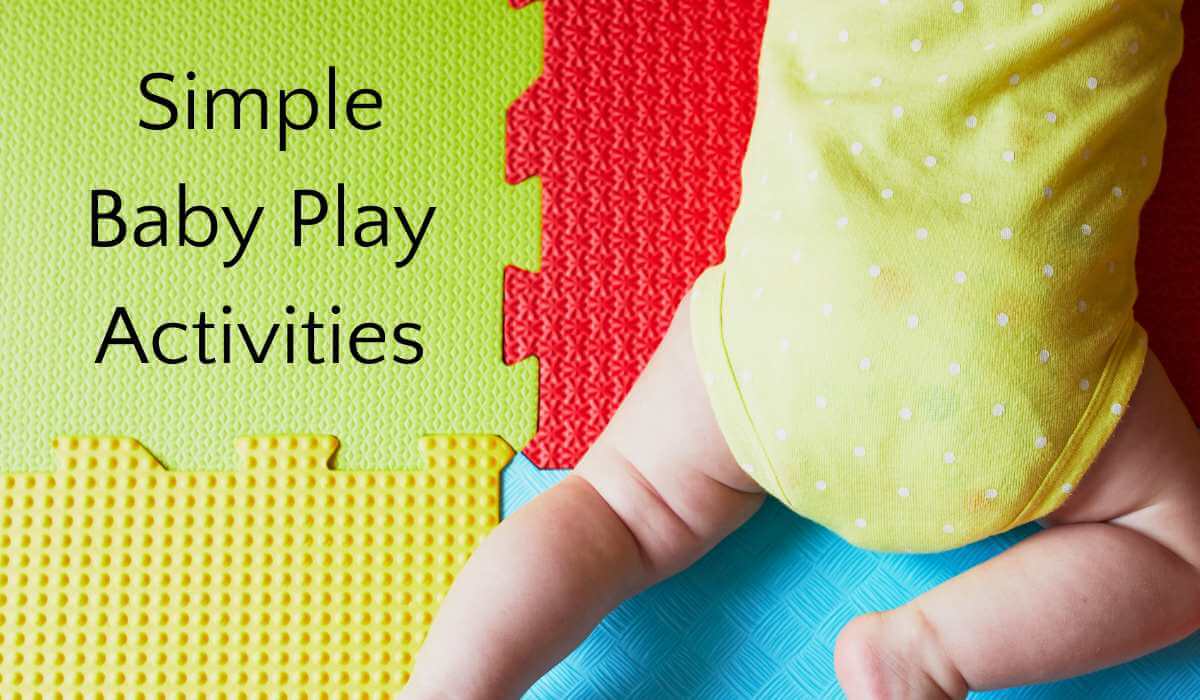
For children 18 months and younger, the American Academy of Pediatricians recommends no screen time, with the exception of" other than chatting with an adult long distance for children ages 0-2 "video chatting along with an adult (for example, with a parent who is out of town)."
When you have a baby or toddler, the days can sometime seem endless. Fortunately help is at hand! These easy baby play ideas help develop fine and gross motor skills, and encourage language and social development. Plus, many of them can involve siblings, too!
Board Books
There was nothing I loved more that reading with my baby.
First, let's start off by acknowledging if your baby wants to mouth books, that's fine. There are plenty of baby-friendly board books or soft-covered that will stand up to eager little hands and teething babies. Check out some of our favorite baby books:
- Poetry books for babies and toddlers
- Our favorite black and white board books
- Multicultural books for babies
- Interactive books
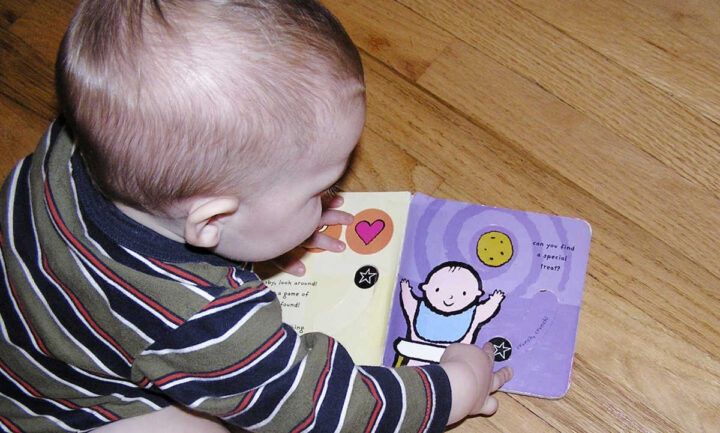
Sometimes it can be tricky to read to baby when an older sibling is also eager for story time. This was often the case in my house, but with experience, I developed some very effective ways to read to siblings of different ages! For more ideas on how to read to active babies, Kim has some excellent tips.
Tummy Time Ideas
Tummy time for babies is so important! Placing your baby on their tummy (not when they are sleeping, please!) is crucial for developing muscle strength, and helps them explore different sensory experiences.
You can place a toy in front of baby to encourage him to lift his head, or get down on the floor with them, face to face. Put black and white board books on the floor to give them something to focus on or add in some motion by pretending a stuffed animal is walking by!
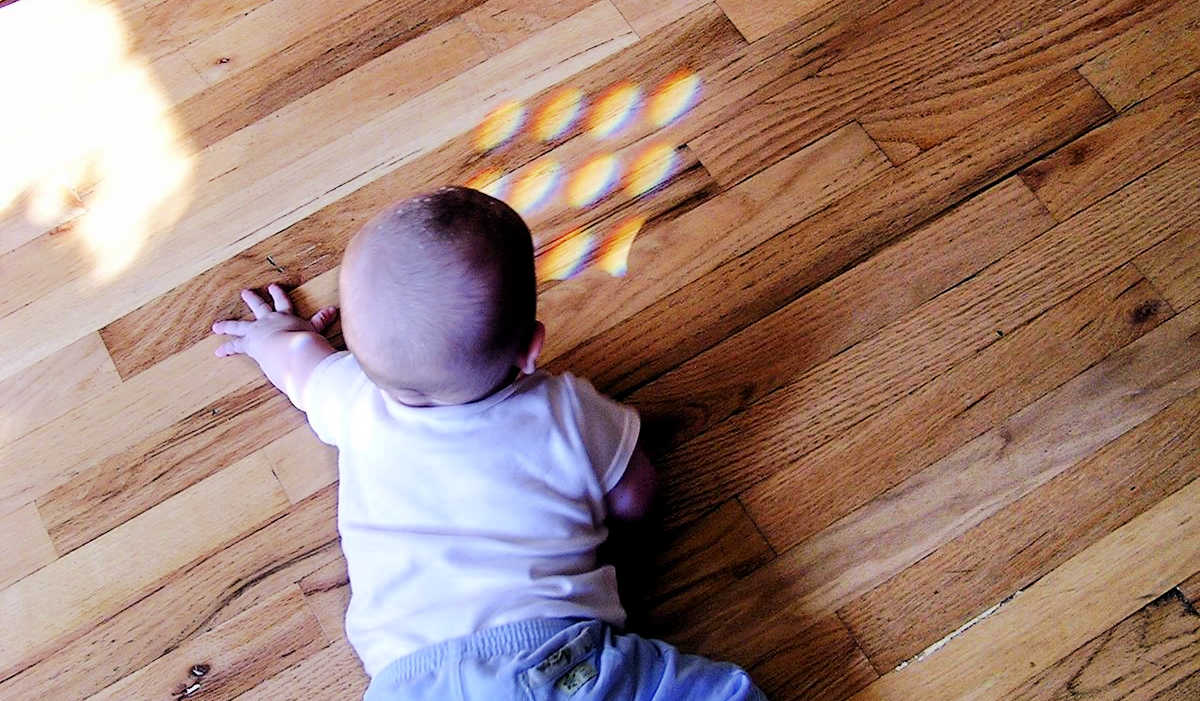
Rhyming Games and Songs
Babies love rhymes, repetition and singing, which are great for language development. You won't have to work hard to recall all the wonderful Mother Goose nursery rhymes from your own childhood!
Here are a few to get you started:
[Put baby on your lap] Trot, trot to Boston,
Trot, trot to Lynn.
You’d better be careful,
Or you might fall in! [Pretend to let baby fall through your knees]
Trot, trot to Boston,
Trot, trot to Dover.
Look out everyone,
You might fall over! [Pretend to let baby fall off your lap]
This little piggy went to market. [Touch baby's big toe.]
This little piggy stayed home. [Touch baby's second toe, etc.]
This little piggy had roast beef.
This little piggy had none.
And this little piggy cried, "Wee, wee, wee!"All the way home. [Tickle baby all over]
Jack in the box [Cover your eyes]
Sits so still.
Won't you come out? [Wait with your eyes covered]
Yes, I will! [Throw up your arms]
Don't forget to add in some of these action songs, too!
Puppet Play
Nothing makes a baby laugh and clap faster than a funny puppet show. As an added bonus, this a puppet show is an excellent way to encourage older siblings to engage with baby!
For a quick puppet show when you don't already have ready-made puppets, get an old sock and draw a couple of eyes on it. It couldn't be easier. For character puppets, I love this set of animal hand puppets.
When your storytelling skills start to falter, the puppet can recite nursery rhymes or sing songs.
Treasure Box
This is a tried and true baby activity that will be different every time. Find a large shoebox, or shipping box and fill it with a variety of baby-safe items, such as rattles, board books, stuffed toys, plastic containers, toys, etc.
Show your baby how to reach in and grab an item. When they do so, affect surprise, clap, and name the item. Let your baby guide the activity. Perhaps they will want to dump out the box, or explore one item more than another. Somedays this activity will last 20 minutes. Somedays it will last 2. There is no right or wrong way to let them investigate the contents of the box.
Ribbons
If you have a bagful of ribbons you were saving for something but you didn't know what, here are two ways to put them to good use.
RIBBON SENSORY TUNNEL OR BOX
Teaching Mama blog shows you how to set up a box (or bin) with hanging ribbons. Baby can run their hands through ribbons, lie on their back and kick the ribbons or crawl through them into the box. Be sure to follow the instructions to make the box safe for baby.
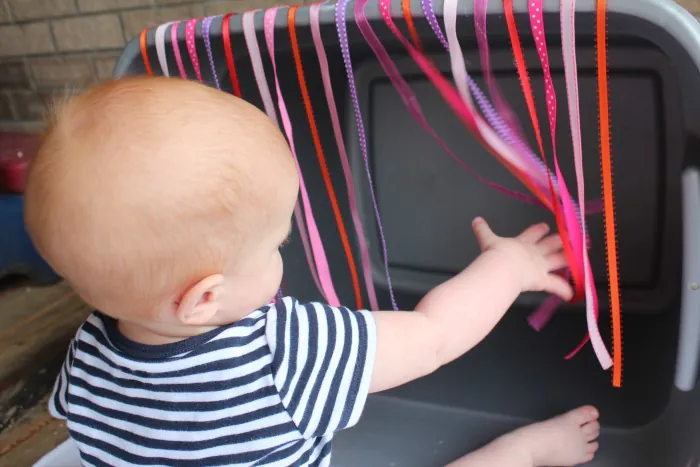
RIBBON PULL BOX
The ribbon pull box doesn't take too much effort to set up, but you'll want to take the time to do it correctly. Messy Little Monster has some great instructions for this simple baby activity that helps develop fine motor skills.
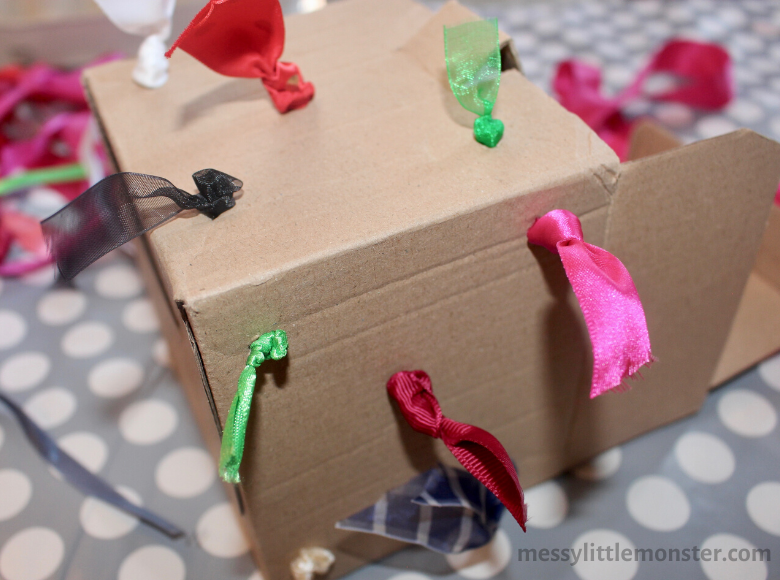
Explore Blocks and Balls
Hide the breakables, if you're worried, but allowing babies to explore blocks and balls of all (non-chokeable) shapes, sizes, and materials is a great activity for gross motor skill and fine motor skill development.
Be sure to roll the ball to your baby and perhaps they will even roll it back!
Ball in a Box
When my child was little, he loved examining a ball in a box! One day I randomly put a colored bouncy ball in a clear plastic container and he couldn't get enough of it! He was too young to open the container, but it was fun to watch him try to figure it out.
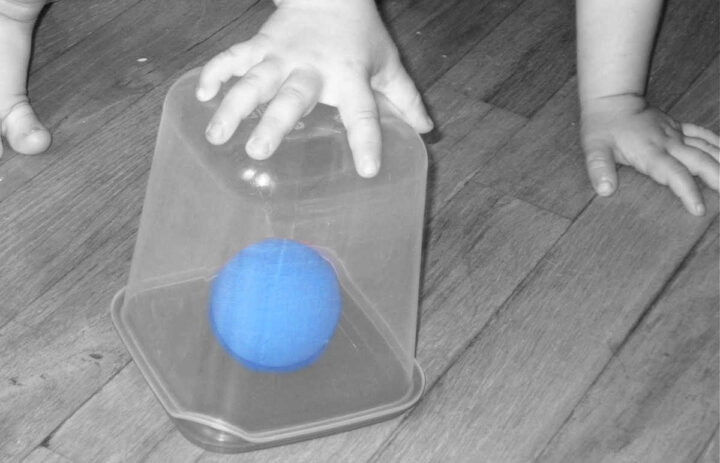
Bang Pots and Pans
You might need some ear plugs, but denying your baby the chance to discover what happens when he hits a pan with a wooden spoon would be tragic, indeed.
If you like, provide your baby with appropriate musical instruments like rattles.
Sensory Bottles and Bags
Babies are too young for classic sensory trays but that doesn't mean you can't find appropriate sensory play ideas. Check out these diy sensory bag ideas for babies who put everything in their mouths and this taste-safe "mud" sensory bin is fun, too. The ideas also have the advantage of giving your baby lots of tummy time!
DIY sensory bottles which are properly secured are excellent ways to keep baby occupied! Fill a sturdy plastic bottle with items and water, glue on the cap and watch your baby's eyes light up.

Toy Drop
If your baby is nearing the toddler stage and you want to keep them in one place for more than 30 seconds, this is the activity for you!
Take a large cardboard box and cut a hole in the top. Place a basket of objects next to the box and demonstrate how to drop the objects into the box. This activity is deceptively simple. In fact, my older child could not help but get in on the action.
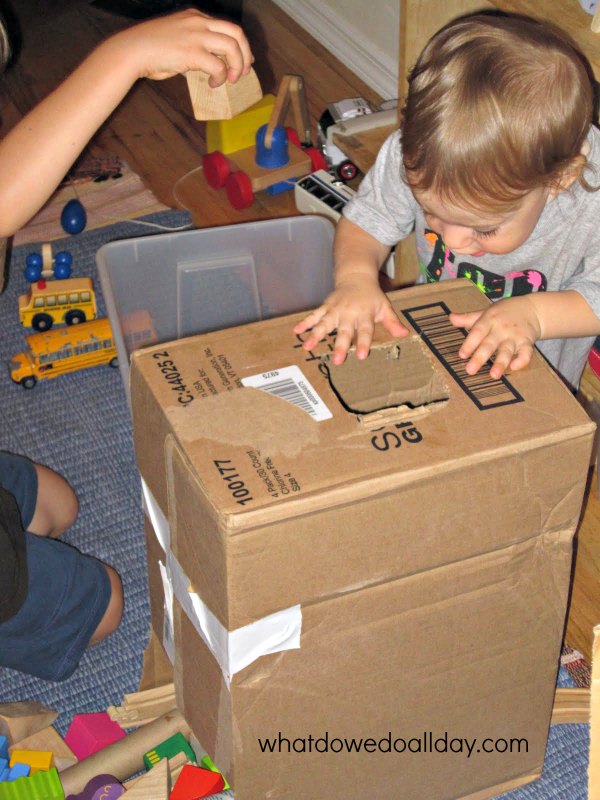
Mirror Play
Children start to recognize themselves in a mirror between 18 months and 2 years, but by about 6 months they can react to their own reflection. (source) However, they can start mirror play at any age!
Stand or sit in front of a large mirror, holding your baby. Talk, sing, make faces, bounce up and down, or dance and watch how your baby responds.
In fact, you don't even need a mirror! At the right time of day, a window can offer a great reflection experience, as MaryAnn explains here.
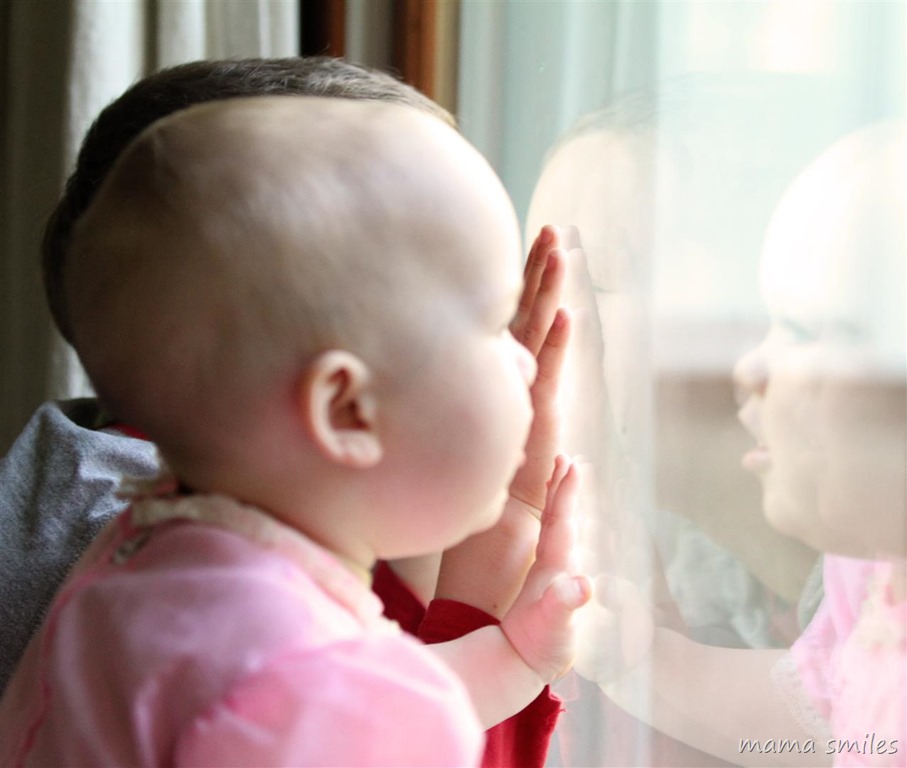
Crawl Obstacle Course
Do you have an active crawler? In a safe environment, set up an obstacle course of pillows and toys. Supervise them as they attempt to crawl over and through the obstacles. Of course, they might decide to "solve" the course by simply pushing the obstacles aside. That's okay, too!
Peek-a-Boo with a Toy
This idea is so easy! All you need is a scarf or blanket and a couple of favorite toys. Place the scarf over the toy and ask, "Where is the toy?" When you remove the scarf, exclaim, "Peek-a-boo!" For variety, adjust the amount of time you wait until you uncover the toy, encourage your baby to grab the scarf (if they are able), and switch out the toy you use.
Muffin Tin Grab and Place
This is a fun baby activity for babies who are grabbing items. Get out a muffin tin and the same number of blocks as you have spots in the tin. Place each block in a muffin tin cavity. Show baby how to remove each block and then replace it.
No doubt baby will be intrigued and find their own way of playing!
Drop and Dump Game
There are few things more enjoyable to a developing baby and toddler than dumping out a bin or basket of items. Usually it's a bin you don't want emptied, but why not make the activity into a purposeful game?
Grab a basket and a pile of toys or other baby-safe items. Have your baby watch as you place all the items in the basket. Then, push the basket towards baby and watch as they dump them out.
This is even more fun, if your baby is sitting in their high chair. They will love watching everything tumble to the ground!
Repeat Sounds
To help your child's language and communication development, make time to focus on them when they are gurgling and making sounds. Repeat the sounds (however silly!) with facial expressions.
Engaging with Siblings
Engaging with siblings is a great way to help babies develop their communication and social skills.
Some older siblings are eager to interact with their infant brother or sister. Others, not so much. In the first case, you may find you need to direct the interaction appropriately; in the second, you'll need to find innovative ways to prompt sibling play.
MaryAnn has detailed how her older children "taught" their baby sister through Baby School!
Edible Painting
You don't have to worry about your baby putting their art supplies in their mouths when you allow them to finger paint or whole-hand paint with fruit puree!
Babies who are ready for food can start this painting project by smearing the table (or themselves) with the "paint." When your baby is older, give them a large paint brush and supply paper. Although they may still prefer to paint themselves!
Water Play
Splashing water is a universally loved activity. You can start out with a small container, or move outside to an infant pool. Obviously, you always have to closely supervise children of all ages around water.
Here's a tip. For easy water play inside, get some self-adhesive Velcro. Place one piece on the bottom of a plastic container and the other piece on baby's high chair tray. That way your child won't immediately spill the water all over the place!
Make "Magic"
A surprise sound or image can seem like magic to a baby who is discovering how things work. I had one of those reception desk bells that I used to "make a magic sound" with my young child. Ding a bell, turn a nightlight on and off, even shaking a rattle can make a baby smile. Be sure to make surprise noises yourself!
MORE IN THIS ACTIVITY SERIES:
- 10 Instant activity ideas for 2-4 year olds (with printable list)
- Easy indoor activities for 5-10 year olds (with printable list)
- Keep kids busy while you make dinner (with cheat sheet!)
Don't forget to grab the printable baby play activity sheet!



Leave a Reply